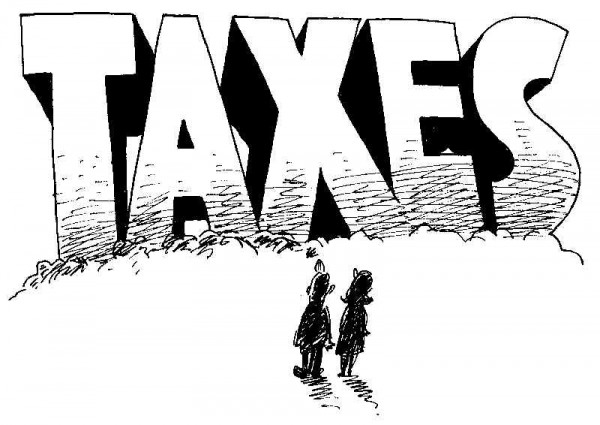Defending the indefensible: Broke govt. tries to justify funding goofy, meaningless ‘studies’
06/16/2016 / By usafeaturesmedia

(BigGovernment.news) You would think that a government racing towards a $20 trillion debt would be looking at every possible way to cut spending and make the most of the taxpayers’ money. And in normal times, that’s what would happen.
But we don’t live in normal times anymore, and fiscal responsibility is something that completely eludes nearly every federal official and lawmaker, all of whom continue to spend like drunken sailors on a Saturday night binge. That much is evident given the number of ridiculously useless “studies” the government continues to fund, even as policymakers and the White House complain that they don’t have enough money for other, much more important, line items.
Speaking of drunk sailors, as reported by AMI Newswire, one of the studies taxpayers have funded recently is one that examines the behavior of drunken monkeys, at a cost of $6.5 million.
In addition, American taxpayers spent $1.9 million to study schizophrenia in the Xhosa population of South Africa, $1.3 million to find out if rats use more cocaine in social settings and $97,000 to study the history of cigarette smoking in Russia, according to an AMI Newswire analysis of “scientific studies” funded by the government.
Taxpayers also spent nearly $1.4 million over three years to create a video game called “Mighty Girls” to help Latino youth avoid being peer pressured into sex, according to an AMI Newswire review of National Institutes of Health (NIH) grants funded in the 2016 fiscal year. Another $1.4 million went to study Twitter messages in 2015 and 2016, with the hope of promoting effective communication about cardiovascular health.
It’s a perennial story: Federally funded research raises eyebrows over its worthiness, even as researchers defend it against critics they see as scientifically illiterate. But the questionable studies found in the NIH records go beyond those listed in Sen. Jeff Flake’s “Wastebook” and Sen. James Lankford, R-Okla. “Federal Fumbles” report in December.
Lankford said studies must clearly show a substantial public good or they should be funded by private businesses and not taxpayers.
“The clear issue is the National Institutes of Health and the National Science Foundation have to articulate the national goals and every grant has to fall into this category,” Lankford said after hearing about the studies AMI highlighted. “If they can’t articulate the clear goals and how the study fits those goals, they shouldn’t fund it.”
But NIH officials said in a statement that they maintain “rigorous” processes for ensuring taxpayer dollars are spent wisely.
“NIH’s mission is to seek fundamental knowledge about the nature and behavior of living systems and apply that knowledge to enhance health, lengthen life, and reduce illness and disability,” the statement said. NIH officials declined to be interviewed about the grants.
Although specific projects often get negative media coverage, NIH critics point to structural problems with the funding process. Researchers whose projects are favored by, or similar to, work by scientists on the review panel tend to get funded more frequently than others whose work is more influential in the scientific community, according to Joshua Nicholson, co-author with with Stanford researcher John P.A. Ioannidis of “Conform and be funded,” a 2012 article in Nature.
“There is a lot of money and there are a lot people getting that money as long as they know how to play the game,” Nicholson said. “But we can’t keep dumping money into it if the structure doesn’t work.”
Nicholson, who founded the scholarly publishing website called The Winnower after graduating from Virginia Tech with a doctorate degree last year, said he has talked to researchers who privately admitted to submitting grants for already completed research, then using the money for other projects.
“What they’re doing is illegal, but when they get the grant money, they do what they want,” he said.
The NIH funded more than $7 billion in grants around the country and world in the 2016 fiscal year, according to its website. In a rare bipartisan move, Congress last year added about $2 billion to the National Institutes of Health’s $30-billion budget for more research.
AMI Newswire reviewed thousands of grant titles and relevance statements, which justify why a project is important to science or society, to identify at least $40 million, including projects cited above, that either didn’t appear relevant or had significant costs compared to the potential benefits for society. The funding on those grants in previous years — some of which stretch back as long as three decades — cost taxpayers more than $200 million.
“There are so many grants going out the door and no one oversees which grants go out the door,” Lankford said. “Then everyone second-guesses why those grants were made. There has to be a way to deal with this.”
An NIH spokeswoman provided review and audit standards for research that allow NIH to terminate grants that didn’t follow the approved proposal, but she said the number of terminated or suspended studies was not readily available.
For Nature, Nicholson identified influential scientists by focusing on whether they had research that was cited by others 1,000 times or more. He found only about 40 percent of those influential researchers had NIH funding.
Of the roughly 75 projects AMI Newswire identified, only 16 primary researchers — about 21 percent — had papers cited by 1,000 or more colleagues and 11 had research that, at most, received 100 or fewer citations, according to a Google Scholar search.
Nearly a dozen studies were funded for more than a decade, including Oregon Health and Science University researcher Kathleen Grant’s 15-year, $6,500,851 study about whether monkeys who are under stress self-administer more alcohol.
“In order to stem the tide of addiction, Dr. Grant’s research aims to shed light on the risk factors for becoming addicted to alcohol,” a university spokeswoman said in an emailed statement. “Stress is one of them.”
Grant is continuing her work with drinking monkeys. “We propose to extend our study on longitudinal adaptations to excessive ethanol self administration from cynomolgus monkeys to the rhesus monkey pedigree population,” says her 2016 NIH application, which requests funding for booze research on a new group of stressed monkeys.
Lab-animal drug use has been funded extensively by NIH.
“Our central hypothesis is that cocaine self-administration will be increased in rats paired with a companion with access to cocaine and decreased in rats paired with a companion without access to cocaine,” Mark A. Smith, of Davidson College in North Carolina, wrote in the application for a $1.3-million grant over five years.
NIH also approved $373,000 to determine if smoking marijuana leads to pot addiction among rodents.
Rodents.
Enough, already. We get that there are legitimate research interests that the government ought to pursue, but these examples are not outliers – they are part of a regular pattern of scientific abuse in which subject matter is “studied” that has no practical use for the purposes of advancing science. And again, when you’re broke and spending hundreds of billions more a year than you are taking in, government can and should cut these academic freeloaders off, once and for all.
Contributing: Arthur Kane, AMI Newswire.
More:
- Tax Dollars For Drunk Birds And Musical Monkeys
- Uncle Sam Continues To Waste Your Tax Money On Frivolous ‘Research,’ Such As Paying A ‘Scientist’ To Have A Bee Sting His Genitals
- Rand Paul Announces Big Government Waste ‘Bracket’ Winners
BigGovernment.news is part of the USA Features Media network. Check out our daily headlines here.
Tagged Under: academic freeloaders, phony research, taxpayers





















